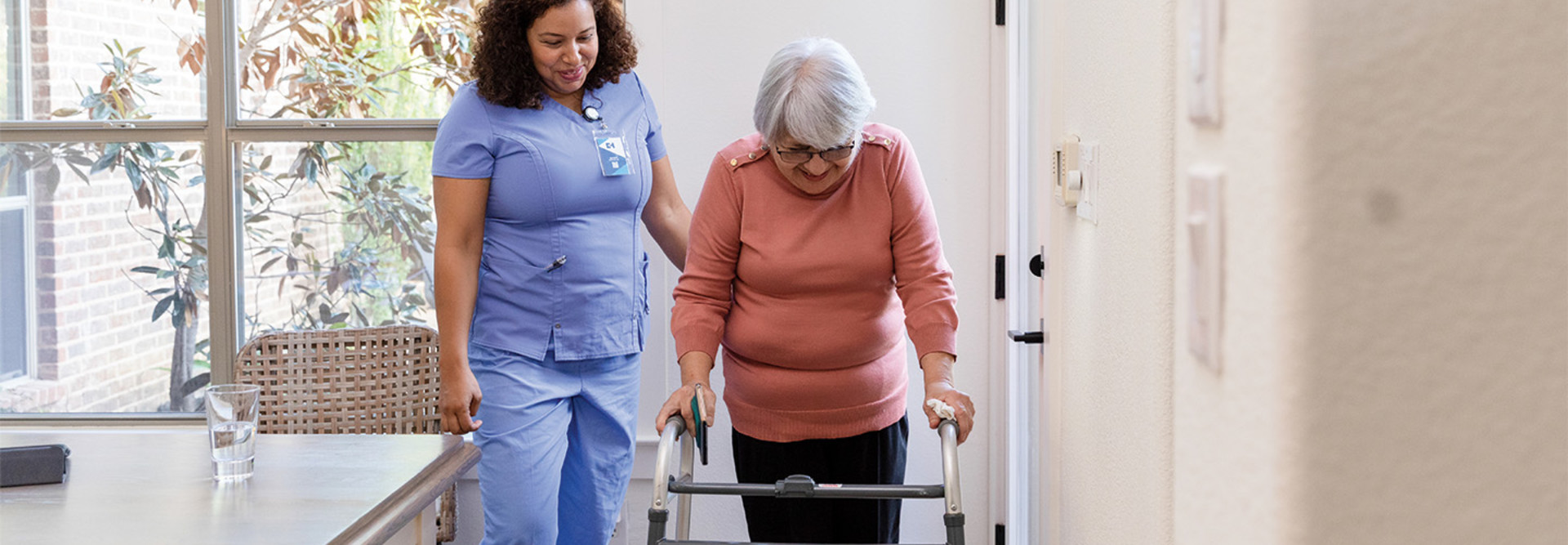What Types of Services Can be Offered Via Hospital at Home?
There is almost no end to the ways the hospital-at-home toolkit can be adapted and applied. Implementation can be tailored to meet the unique demands of different rural settings. Some of the applications include:
- Inpatient Care at Home: This component is focused on patients who need hospital admission but could be safely treated at home. The model includes comprehensive services such as clinical care, dietary services, lab tests and radiology, all provided at the patient’s home. Hospitals must apply for a Medicare waiver and be accepted by CMS to offer this service.
- Outpatient Therapy at Home: This program addresses the need for physical therapy, speech therapy and other therapies for patients unable to travel frequently to the hospital. By bringing therapy services to patients’ homes, the model improves patient compliance and health outcomes. It also provides a new revenue stream for the hospital through outpatient billing, which is supported by existing Medicare regulations and many third-party payer contracts.
- Primary Care at Home: This modern-day house call model can be offered through a hospital’s primary care providers and/or a rural health clinic. Finding an existing practitioner ready to transition their practice to visiting patient homes is helpful. This service enhances continuity of care for patients with chronic conditions, ensuring they receive regular medical attention without traveling.
- Infusion Services at Home: The same hospital-at-home tools can be used to bring chemotherapy infusion or other medication infusion services to patients in their homes. Many patients appreciate the option to receive needed medication in a more comfortable environment.
READ MORE: What will it take to transform the rural healthcare landscape?
Best Practices for Hospital-at-Home Implementation
Here are some best practices for community and rural hospitals to consider when implementing hospital-at-home care:
- When introducing the hospital-at-home model, hospital leaders and clinical staff must be engaged in credentialing, policy and procedure development, safety measures, clinical workflows, and other crucial components to ensure the program’s success.
- Communication and collaboration with hospital and community stakeholders is key to the strategic alignment required for implementing hospital-at-home services.
- Hospital teams must be prepared to meet patients where they are, which may be outside a hospital’s four walls. However, that may be challenging for traditional hospital-based clinicians and operators, as it takes education, training and testing before they get comfortable working with hospital-at-home care.
- Outpatient therapy offers an ideal way for hospitals to introduce home healthcare. It can be set up relatively quickly, and patients have responded positively to this care model.
- In our experience, the Community Hospital Corporation’s hospital-at-home model is suitable for community hospitals. A community hospital can minimize startup costs when they work with us, and our partnership provides turnkey technology and staffing support.
- Identifying a provider in your market interested in providing primary care at home will make the program quicker to introduce and scale.
- Hospitals should define the scope of potential competition and determine which services to offer based on what is feasible and what doesn’t overlap or create conflict with community providers.
The hospital-at-home model represents a significant advancement in rural healthcare that addresses long-standing access issues. By bringing comprehensive care directly to patients’ homes, this model may improve health outcomes, increase patient satisfaction and provide a sustainable approach for rural healthcare providers.
UP NEXT: Here’s what health systems need to consider about at-home acute care security.











